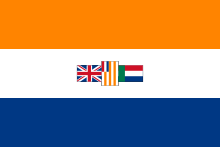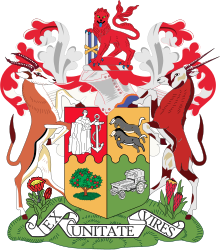
Back Apartheid Afrikaans Apartheid ALS Apartheid AN रंगभेद ANP الفصل العنصري في جنوب إفريقيا Arabic لأپارتايد ARY ابارتهيد ARZ বৰ্ণবৈষম্য নীতি Assamese Apartheid AST Aparteid Azerbaijani


Apartheid was a racist political and social system in South Africa during the era of white minority rule. It enforced racial discrimination against non-whites mainly focused on skin color and facial features. This existed in the twentieth century, from 1948 until the early 1990s. The word apartheid means "apartness" in the Afrikaans language.[1] Racial segregation had existed in Southern Africa for centuries. In the elections of 1948 the National Party took power and in the next few years made new apartheid laws—the new laws more strictly enforced segregation. In theory, the goal was to bring independence to the African majority in their own little countries to be created from South African territory.
Under this system, the people of South Africa were divided into four races, and the different races were forced to live separately from each other. There were laws to keep them separated. The apartheid system in South Africa was abolished in 1994, when a new constitution was ratified which abolished the previous system of segregation.[2] The last President who held office during the apartheid era was Frederik Willem de Klerk; who was responsible for holding negotiations with political prisoner Nelson Mandela to bring an end to apartheid.[3] Following these successful negotiations, Nelson Mandela was elected to the Presidency of South Africa after multi-racial elections were held in April 1994, and became the first black person to hold the position. He was 75 years old. [4][5] The pair were awarded the Nobel Peace Prize for their efforts. Today, the term apartheid is sometimes used for similar segregation systems in other countries.
- ↑ "Apartheid (1948-1994)". Archived from the original on August 5, 2017. Retrieved October 4, 2017.
- ↑ "Constitution of South Africa". Wikipedia. 2018-12-23.
- ↑ Abegunrin, Olayiwola Africa in Global Politics in the Twenty-First Century: A Pan-African Perspective Palgrave MacMillan New York, New York 2009 page 20
- ↑ "KS2 History".
- ↑ Lockard, Craig A. Societies, Networks, and Transitions, Volume C since 1750 Second Edition Wadsworth Cengage Learning page 889